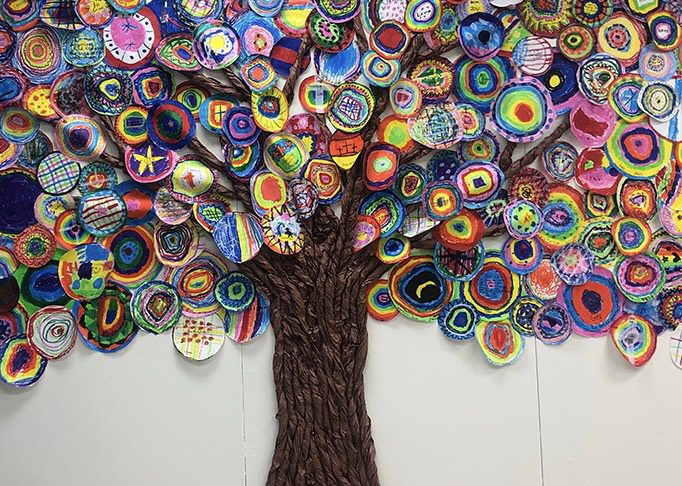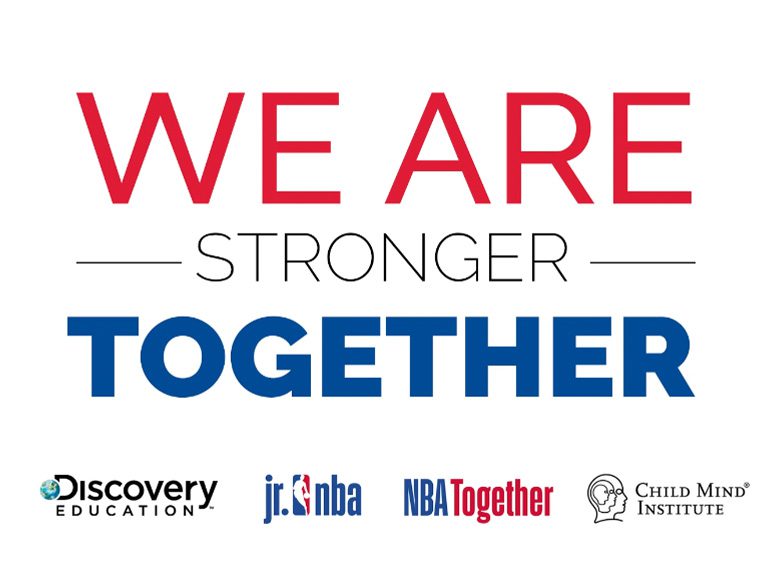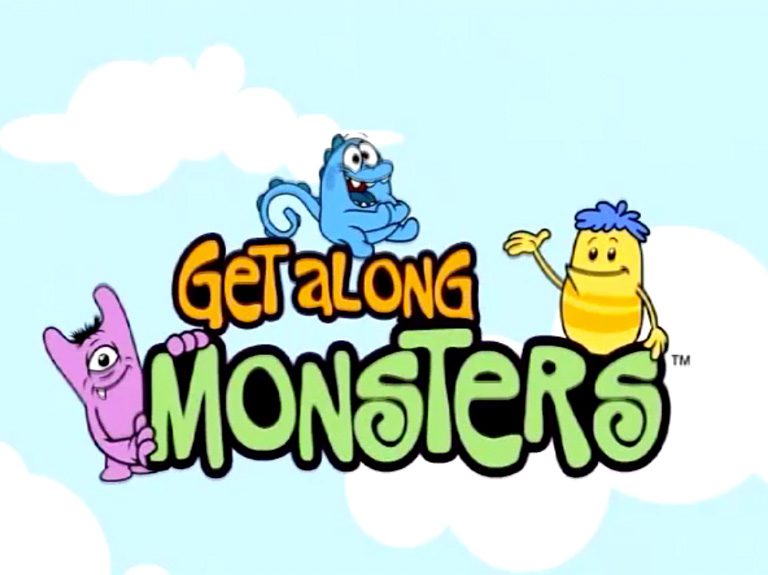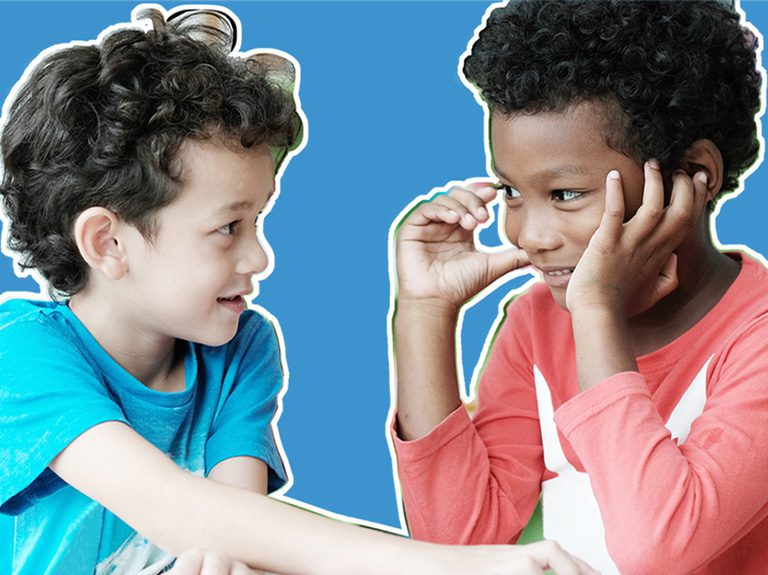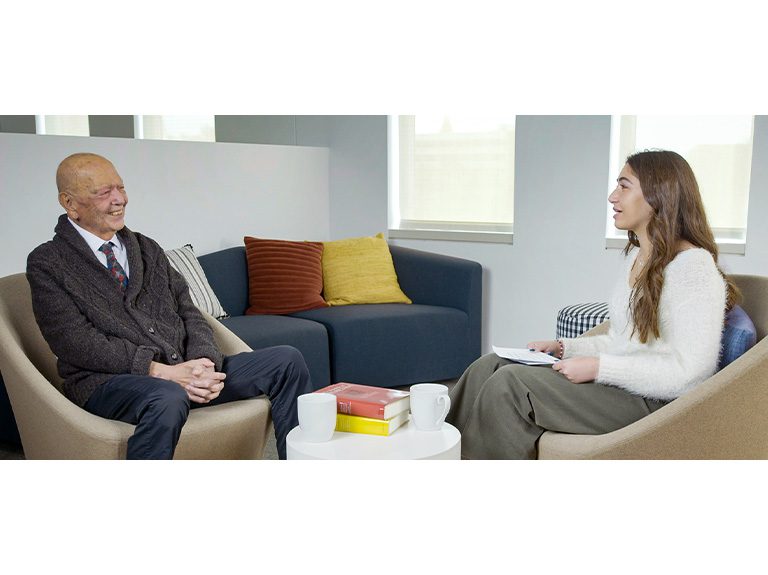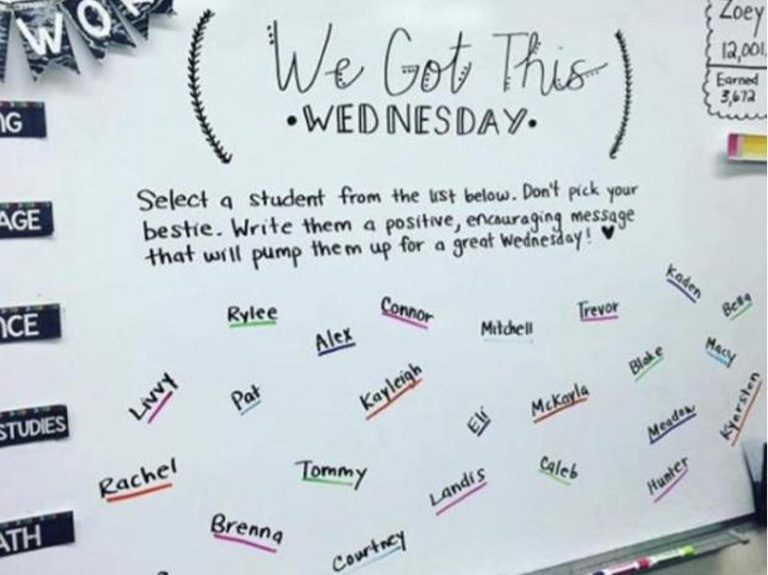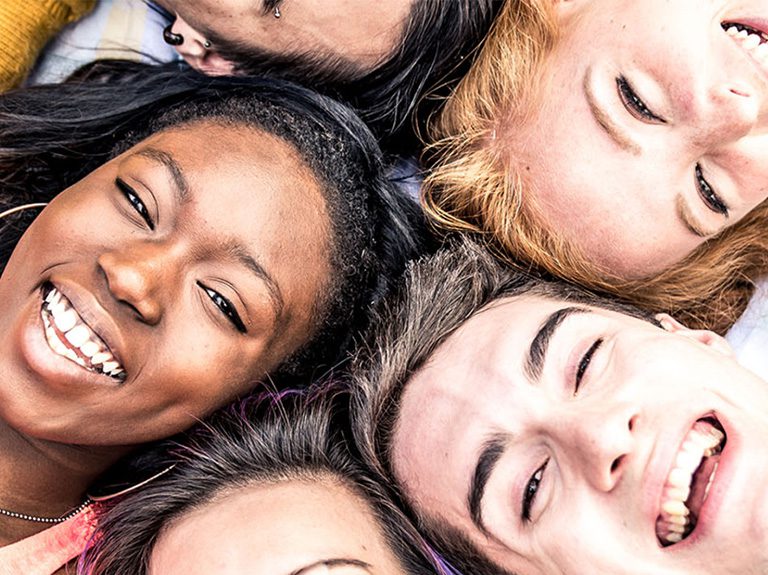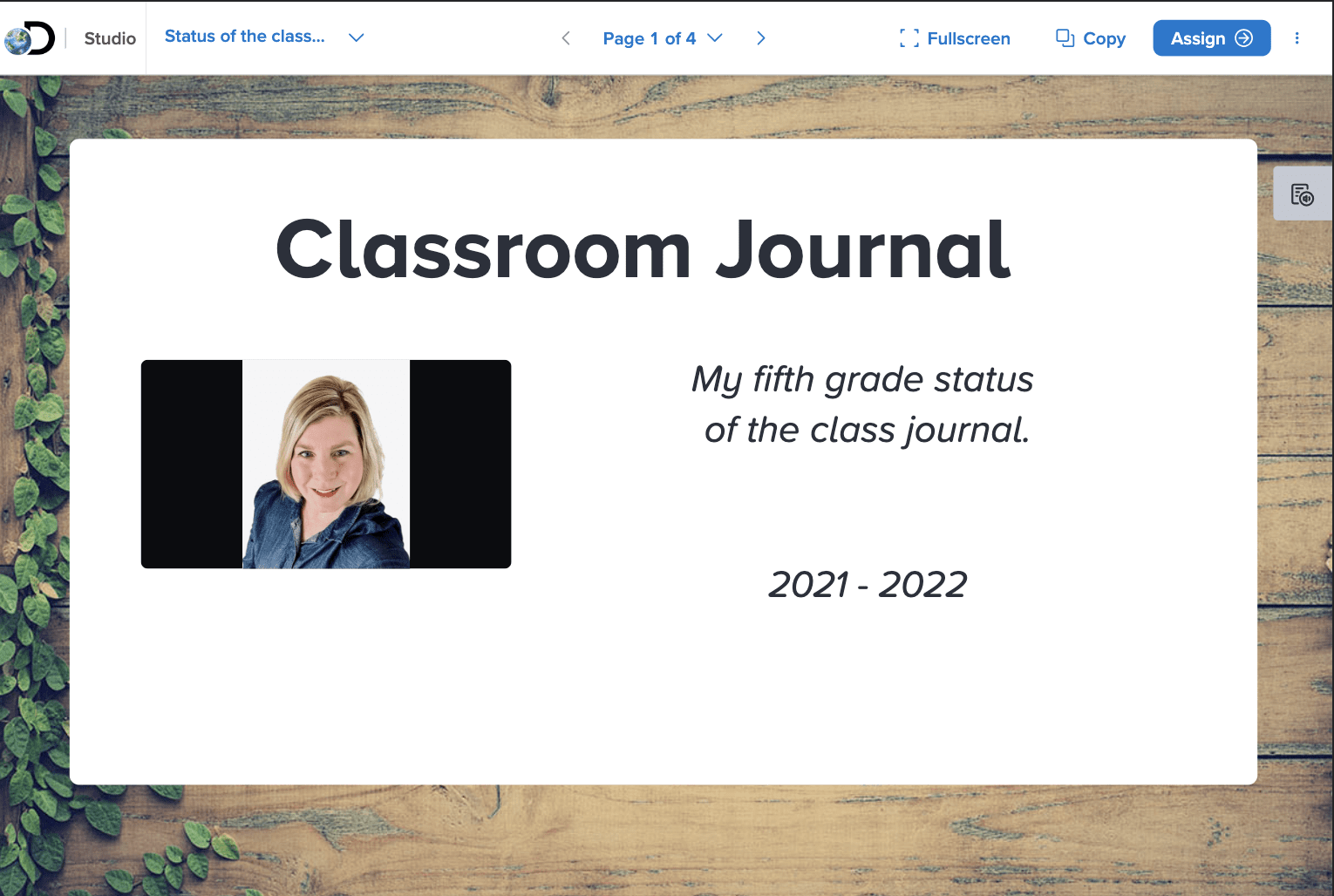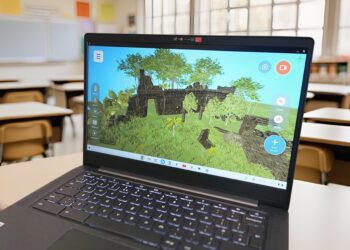In case you missed it, this year’s DEN Summer Institute (DENSI) was held on July 18 and 19. DENSI is a one-of-a-kind, community focused, professional learning experience exclusive for DEN STAR educators! Jessie Erickson, a DEN Leadership Council member, held one DENSI session to share her tips, tricks, and advice for building a strong classroom community. Read on to learn more about Jessie’s take on how Discovery Education resources can be used to help your students get to know each other, create meaningful connections, and grow as individuals.
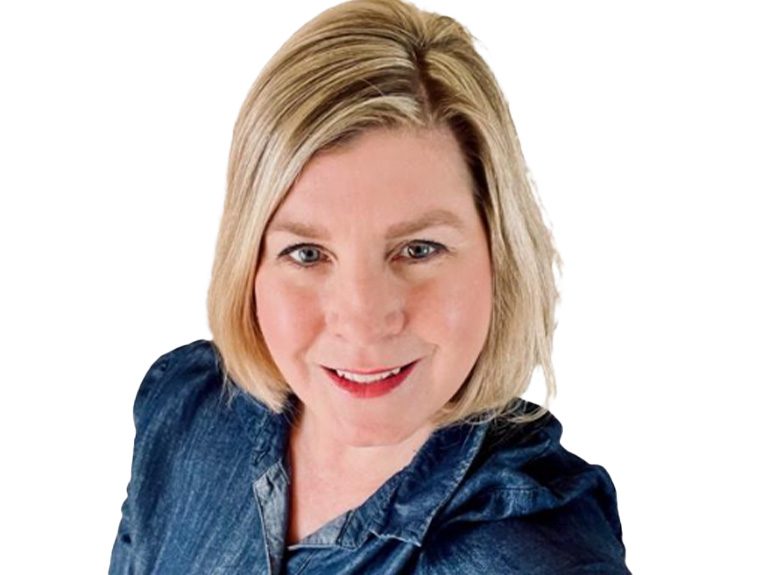
Jessie R. Erickson, Ed. S.
Jessie is a recently retired K-8 classroom educator, who taught a variety of subjects and grade levels during her 34 years in education. She is a DEN Leadership Council member, ISTE Community Leader, reading specialist, and professional learning facilitator.
Introductions
The first step to building connections with your students is getting to know them and allowing them to get to know you! Students can feel nervous in the first few days of school, especially if they don’t know others in the class. Here are a few of my favorite ways to help us get to know each other:
- 3 truths, 1 lie: This conversation strategy can help us share facts we may not know about each other! Help make students more comfortable with sharing their information by capturing their Three Truths and a Lie on a Studio Board with pictures, text, and decorated in their favorite colors. The Studio Board serves as a virtual representation and might offer hints or throw off the class when it comes to determining which “fact” is actually a lie!
- Tabletop Texting: This strategy gets conversation going in a quiet way! You can set up chart paper around the room with questions and have students rotate to answer the questions, build on each other’s answers, and “discuss” the topics silently. As you move past introductions, I’ve also used this strategy to celebrate students by putting a sheet of paper on one student’s desk and having everyone share things they love about that student—what a great way to start your day!
- Conga Line: This strategy works in gym class, math class, really any group setting! We can put on fun music, ask questions about our classroom, school, or community, and rotate through partners to have conversations with new classmates.
Helping Our Students be Healthy, Well, and Mindfully Ready
To make academic progress students have to use the right mindset!
International Dot Day is Friday, September 15, and is a great reminder that we all leave a mark! At our campus, we celebrate Dot Day by having every student leave a dot on a bulletin board, and those dots create a huge, colorful tree to show we all made our mark.
The NBA and WNBA Stronger Together Series highlights athletes who share their mindset, how to be stronger, and how that helps their team! It’s a great community-building conversation where we can talk about how a positive mindset can help us all move forward, learn, and grow.
#MyYoungerSelf and #WeThriveInside are both wonderful resources from the Child Mind Institute for students in grades 3-12.
- #MyYoungerSelf offers messages about what you’d tell your younger self if you could talk to them today. Our middle school and high school students write letters to their younger selves, and we share them in our elementary hallways with a picture of the writer from a younger grade. It’s a fun activity for the older students to serve as leaders and it gives our younger students motivation and someone to look up to.
- #WeThriveInside is about what you do to get through stressful situations or times when you’re feeling less than your best. Some of us struggle with anxiety, like famous actress Emma Stone, who talks about how she works through anxiety even when she’s in front of a camera! It’s motivational for the students to learn from others, especially people they see on TV that might have them think, “Oh, what problems could they possibly have? They’re a movie star!”
For students in grades K-3, the Get Along Monsters are great to create student discourse! I set up a breakout game that will cause some sort of conflict for students to work through, and when the game is finished, we circle back to the Get Along Monsters to have conversations around the following questions:
- How do we get along with each other?
- How do we handle anger?
- How do we talk through our emotions?
- What do we say to each other when we don’t like what the other person said about us?
These cute, short, animated videos are a great resource for these conversations, and the kids are usually singing along by the end!
Stuff You Should Know is one of my favorite podcasts of all time! There are episodes covering mental health and wellness topics, and the hosts have a great mindset. This podcast is meant for middle school and high school students, and the episodes about fear, jealousy, hate, and anger are very relevant for students in these age groups.
Interested in connecting with other educators? Join the Discovery Educator Network today!
Virtual Field Trips
Not only are Virtual Field Trips exciting ways to bring new experiences into your classroom, but there are also great options to create learning moments around wellness, friendship, self-esteem, and happiness.
This Virtual Field Trip covers how to work with others, establish friendships, and build relationships. It has resources you can use with the whole class, as well as components for home use so parents and caregivers can get involved. These resources teach kids they are in control of their own emotions, which is important when we consider how we affect our community.
These amazing resources cover how we treat others by celebrating, not penalizing, differences. Last year we paired these resources with an assembly at our middle school! We invited two Holocaust survivors to share their experiences, which was an amazing, eye-opening experience for students in grades 6-9.
My students love Amazing Me and so do I! This Virtual Field Trip is all about self-esteem. We love to tie in some of our positive messages from the lessons into our bulletin boards, like “We Got This Wednesday!” where we select someone to give a positive affirmation in the classroom that day. There are so many wonderful ideas in Amazing Me, and great SOS strategies built right in!
This content is typically meant for middle school, but on our K-8 campus, it’s important I can extend the learning to help all students. For elementary, we focus on what makes us happy, what happiness is, and how to help make each other happy. We do our happy dance, then we program our Dash robot to dance, too! Our middle school students complete the entire VFT and have conversations about synonyms and antonyms, words in foreign languages, and create some bulletin boards. We havea great time making it cross-curricular!
Reflecting on Feelings
A caring community is there to celebrate when things are fun and also help motivate you during tough times.Here are a few of my favorite resources to help students build a caring community:
- Introduce mindfulness with the Inner Explorer Channel. These K-12 resources helps students get started with mindfulness and think about where we are together as a classroom. You can do the activities individually or as class, but they are all ready to grab and go from that channel. If you don’t have it bookmarked yet, be sure to do so!
- Encourage students to write about their emotions with writing prompts. Even if I don’t use the prompt as written, it’s a great place to start for some inspiration! I’ve copied and pasted some of them, created my own slide deck, pushed them out through Google classroom assignments—whatever I need to do to get my students writing and sharing!
- Use music and images to reset the energy in your classroom. Try searching DE for sound effects, songs, brain breaks, images, or whatever sets the right tone in your classroom. Whether you want to calm the class down or get everyone excited, there is media in DE to match your energy!
Favorite SOS Strategies
These Marzano and McREL supported strategies are great for student engagement and building community! They’re often built into Discovery Education lessons, but you can also add your own spin on them. Here are a few of my favorites:
- Who Are You? This strategy makes a great reflection moment. Using pictures of animals or emojis can help you check in with students multiple times a day!
- Get Your Thinking Hat On! This strategy helps students evaluate content through a specific perspective. Each “hat” offers students a specific perspective to keep in mind as they watch a video. Students then write their response with that perspective in mind, helping them open their minds to other people’s perspectives. Then students share their perspectives to come to a consensus on what they watched!
- Multiple Perspectives. This is a great way for students to think about someone else’s perspective. We use one of the great images and videos from DE and ask students to put themselves into the shoes of someone shown to help them connect with their perspective and build empathy.
- They Said What? We use this strategy in Social Studies, but it can also be used for health and wellness! This strategy asks students to evaluate a picture and consider what someone would be saying in that moment. To inspire some community-strengthening conversations, you could share an image of two students getting along or two students who seem to be arguing. Then ask questions like:
- What do you think they are saying to each other?
- What could make this situation better?
- What could escalate the situation?
Classroom Journals with Studio
Let’s flip the switch on Studio! Last year I visited some classrooms who held class meetings to have conversations and establish norms, but they wanted a way for students to reflect on those conversations and bring in images or video. With Studio, students can make their own slides, so we turned that into their classroom journal. We had every student make a classroom journal 2 years ago and interest has continued to spread!
Once teachers saw that students could borrow images from Discovery Education or upload their own images to add to their slides, we were suddenly using Studio as a way for students to collect all their learning and thoughts in their journal. We’ve had students create slides to answer different journal prompts, like asking students to capture what they’re grateful for with pictures and text. These prompts send students on a scavenger hunt within DE to find images, while also writing their ideas and reflections.
Finding More Resources
You can find lots of videos on creating classroom community by searching for activities that align to any topic you’re looking for. I’ll search for mindfulness, gratitude, relationships, community—just type a word into the search bar in Discovery Education Experience, select your grade level band, and then sort out the types of resources. Select “activities” or “videos” to find exactly what you need for your classroom and your students. As teachers, we all know the temperature of our classroom. We know when we’re having good days, we know when we’re having bad days, and we know by watching our students what we need to teach next!
One of the first things you do in a new school year is look at your classroom and decorate it! Set up bulletin boards, lay down your classroom rug, then it’s time to think about how to make your classroom community beautiful too! Plan to get to know your students, set up your classroom norms and expectations, and build relationships with students! Discovery Education has a lot of support to help you start this journey and build a welcoming classroom community.


